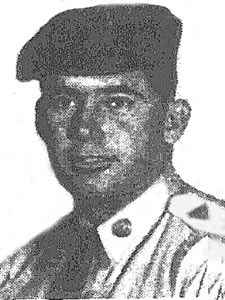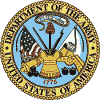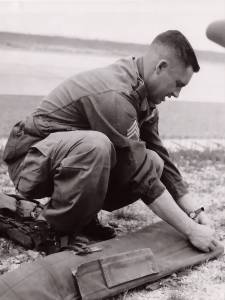| |
|
|
|
Marlin Curtis Cook
Sergeant First Class
DET B-52 (PROJECT DELTA), D CO, 5TH SF GROUP, USARV Army of the United States Vernon, Alabama December 18, 1929 to January 29, 1966 MARLIN C COOK is on the Wall at Panel 4E, Line 106 See the full profile or name rubbing for Marlin Cook |

   |

|



| |

SFC MARLIN CURTIS COOK
|
|
Curtis was my first cousin though 18 years older than me. Growing up, you were my HERO. Whenever I knew that you were coming for a visit, my whole world lit up. I remember the big Cadillac with you driving and me in the seat next to you while you sang Hank Williams songs and seemed to be the happiest person on earth. The day I found out that I would never see you again was one of the worst days of my life. I was only 17 at the time and went to say my last goodbye at Fort Bragg. Two years later, I would find myself on the same soil in the same country that had claimed your life. All the time that I was in Viet Nam with the 101st Airborne, you were constantly on my mind. Even today, 36 years after you left us, I still get a warm feeling when I think of you. Though I know that you may never see this, I just wanted that all who do see it, will know what a special man you were.
Your Ardent Admirer and Cousin, |
|
I found myself typing in my grandfather's name today only to find this page and I read what you wrote. My name is Jessica Cook and Marlin Cook was my grandfather. My grandmother is Ruby Fay Robertson Cook of Alabama and my father is Marlin David, his youngest son. I've always wondered about his family since of course I am his only grandchild. Unfortunately not being able to carry on his name has always upset me and not knowing any other family members has as well. He died long before I was born. People tell me many wonderful things about him and the strong person he was. I miss him without knowing him, and I admire him for the price he gave his country. I know he's always with me. He always has been. Thank you for this site. It makes my family proud. I went to Washington DC two summers ago with my mother to the Vietnam Wall and I did a rubbing of his name. It was very bittersweet. Please write to me. I would love to talk to you.
From his grand-daughter, 16 Jun 2006 My boyfriend found the Project Delta web site after reading the book SOG. We discovered that my grandfather served along side these men. This is the story of how it happened.
It was strange for me to read this and find out for the first time what exactly my grandfather was doing when he was killed. The paper work they sent back at the time of death says he was killed by "friendly fire." I hardly see how it was "friendly". Understandably this information was classified at the time and has since become de-classified. I was already proud of my grandfather for serving his country but upon this discovery I have a new-found respect for this man. In the book SOG it is quoted that these men knew what they were signing up for. Most times it was a "suicide-mission" and "they promised you either a medal, a bodybag or both." My grandfather got both, but I can't imagine the pride he must have felt for having been a part of something so extraordinary and respectable.
From his grand-daughter, |
A Note from The Virtual WallOrganized as "Project Delta" in October 1964, Detachment B-52 specialized in training ARVN Special Forces troops and by late 1965 was conducting long-range recon missions in South Vietnam's border regions and across the borders into Laos and Cambodia. These missions usually involved 8 indigenous troops led by two US Special Forces soldiers.The 1st Cavalry Division's Operation MASHER, running from 24 Jan until 06 Mar 1966, was the largest search and destroy mission up to that point in the war. The 1st Cav requested Project Delta recon support in the northern end of the An Lao Valley, an area which had been under complete Viet Cong/North Vietnamese control for years. Major Charles ("Charging Charlie") Beckwith had been assigned command of Det B-52 in the summer of 1965, and he decided that the An Lao Valley recon would be conducted by all-US teams. Seventeen men in three teams - RT ESKIMO, RT ROADRUNNER, and RT CAPITOL - were inserted into the An Lao Valley on the evening of 27 January 1966. Det B-52's Operation 2-66 promptly turned into Project Delta's worst disaster of the war.
While Ms. Cook cites SOG, Shelby Stanton's Green Berets at War addresses Op 2-66 in detail on pages 205-207. Stanton writes that SFC Cook was initially wounded and paralyzed from the waist down by enemy fire but "was killed by helicopters strafing through the middle of the clearing" when SSG Hiner called fire down on the patrol's position, thus explaining Ms. Cook's statement regarding "friendly fire". The photo at the top of the page was provided by Jessica Cook and was taken while Sergeant Cook was serving in France before arriving in Vietnam. |
| Contact Us | © Copyright 1997-2019 www.VirtualWall.org, Ltd ®(TM) | Last update 08/15/2019. |